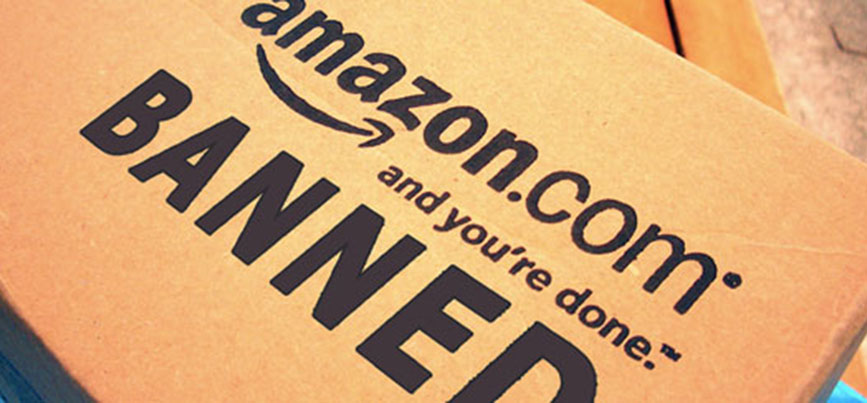
The 3rd of October 2016, what some have been calling Reviewgate. The day Amazon announced that they are no longer allowing incentivized reviews, which means that running giveaways in exchange for reviews is now BANNED.
For those paying attention, this update comes as no surprise. In the past several months Amazon has slowly been clamping on what they deem ‘review manipulation’. First, they made it a requirement to include a disclaimer in incentivized reviews and then they removed the ‘Verified’ label from heavily discounted purchases. But they didn’t stop there. Amazon then set a $5 minimum spend on accounts (raised to $50 a few weeks later) in order to leave a review.
Then in the first week of October, they went all in and completed outlawed all incentivized reviews.
Why did Amazon change their guidelines?
Recently the public has become more aware of the fake review epidemic on Amazon. Many buyers have gone public after being tricked into buying low-quality products with very high rankings. The media also noticed and countless articles have been published warning the public about the quality of Amazon reviews.
Companies such as Fakespot, that used big data and data analytics to detect how genuine the reviews were on a particular listing have also received lots of media attention. Similarweb reports that they received 1.9 million visits in September alone.
The final straw seemingly was a post on Reddit from ReviewMeta, who analyzed 18,000,00 Amazon reviews and proved that incentivized reviews were biased. This post went viral with over 3000 comments and millions of views.
Amazon obviously were not very happy about these developments and likely believed that the public were losing trust in their review system. So in a drastic fashion they completely revamped their policies.
Was this a good thing for small businesses who leverage Amazon as a sales platform? Here is my analysis.
Who will the changes benefit?
Established Sellers of Commodity Products
For established sellers of ‘commodity’ products (non differentiated generic products that someone has just whacked a label on) this is a great thing. For these products, previously their place at the top of the rankings could be overthrown by sellers using brute force rankings tactics. This involved using giveaway services and review groups to giveaway 1000s of units at heavily discounted rates. Although this strategy is not completely nullified it’s effectiveness will greatly be reduced since approximately half of the benefit of this strategy was to solicit reviews and improve their star rankings.
Creative marketers
The change will also reward sellers who are more sophisticated marketers. For example sellers who are sending external traffic to their listing and then using well thought out email follow-up sequences to solicit genuine reviews.
Other examples include sellers who create Amazon affiliate sites that send traffic to their own listings, or sellers who leverage influencer marketing on platforms such as Instagram.
Brands
When it comes to long term success in eCommerce, everything always comes back to brand building and thinking bigger than just Amazon. Going forward, successful eCommerce entrepreneurs are going to have become more creative and look at multiple channels to find their customers and build their business. The low hanging fruit has mostly been claimed. Building a brands with a loyal customer base is the best way to become successful in the long term.
Who will the changes punish?
New Sellers of Commodity Products
On the contrary, this update will severely punish new sellers trying to succeed by selling commodified products. It will be much more difficult to compete with established sellers selling non-differentiated private labelled products. That means sticking a branded logo on a generic silicon kitchen accessories, giving away 1000 units and praying you will shoot to the top of the rankings is probably not the best strategy going forward.
Lazy Private Labelers
Lazy sellers who conduct no brand building activities and don’t actively try to engage with their audience will also be punished. There are hordes of sellers who have for too long relied on review groups and giveaways as their sole marketing tactic to improve their rankings and increase their review count.
On the other hand, there are private label businesses who have not neglected these activities and have actively sought to engage their audience to build a real customer base. These businesses will benefit indirectly from these changes due to reduced competition. Instead of using review groups and services at a substantial cost to get biased reviews they can instead launch their new products to their loyal customer list who would be more than happy to buy their new product and leave an unsolicited review (as long as your product is good!)
Chinese Sellers
The new guidelines will significantly effect Chinese sellers who are heavy users of review groups and services. This is a great thing for most Amazon sellers as the Chinese often would engage in pricing wars which would reduce the profit margin for everyone in that category.
Review Services
Review groups and platforms such as AMZTracker and ReviewKick have overnight become a lot less useful. Even though they changed their policies (they no longer require users to leave reviews) to become compliant with Amazon’s TOS, sellers will be rightfully hesitant to use these platforms due to fear of getting their listings and/or accounts suspended. It will be interesting to see how these businesses pivot to stay relevant moving forward.
So how can sellers get reviews now?
You may be wondering, how am I going to get reviews now? By getting your high-quality product in front of REAL customers (not ‘professional reviewers’!) and asking them for genuine feedback post-purchase.
To do this you should look off the Amazon platform. You will need to find out where your target market hangs out and join in the conversation with them by actively providing value. This might be more expensive and time-consuming in the beginning, but as time goes on your efforts will compound until you have established a real business with a moat.
We can’t tell you exactly where your market hangs out, but a great place to look would be Facebook or online forums. Once you have built up sufficient trust then you can offer them your product at a discount and use AMZPromoter to create a sales funnel and distribute your coupons codes.
We truly believe this is the best way going forward. And even if you break even (or take a loss) from a customer acquisition, you will gain a:
- Customer email – a hugely valuable asset that if managed correctly could be worth $100s or $1000s depending on your niche
- A sale through Amazon – increases your BSR and keyword rankings
- A chance to get legal customer review – with an optimized post-purchase follow-up sequence, your review rate could be >30%
- Trigger Amazon Associates code – (read this article for more information) You get a % of any revenue your customer makes on ANY product purchased on Amazon during the next 24 hours
What will Amazon do next?
Although purely speculation, the next step Amazon could take is to crack down on post-purchase emails. They could either outright ban unsolicited emails or limit them to one email per purchase.
Remember, Amazon values its reputation highly and it will do whatever it can to maintain the integrity of its platform.
If you are selling on Amazon you are just hopping on for the ride and will have to take the good with the bad. There is no ‘justice’ or ‘fairness’ if you are piggybacking on someone else’s platform.
Conclusion
Depending on which group you are in this change is either going to benefit you or make you completely rethink your business model. Those new to the game trying to sell ‘me-too’ generic products should really take a hard look at their business model and reconsider their strategy going forward.
Those who are already savvy marketers or have set up their business to be successful for the long term should be quite excited about this update and what the future holds for them.
You can read Amazon’s full statement by clicking HERE.



